|
Books Should Be Free Loyal Books Free Public Domain Audiobooks & eBook Downloads |
|
|
Books Should Be Free Loyal Books Free Public Domain Audiobooks & eBook Downloads |
|
Literature |
|---|
|
Book type:
Sort by:
View by:
|
By: Edna Ferber (1885-1968) | |
|---|---|
 One Basket
One Basket
This sparkling collection of 7 short stories by Ferber including some that are considered her all time best like The Woman Who Tried To be Good and The Maternal Feminine. Writing for and about women, Edna Ferber touches the very heart and soul of what it means to be human; to make good choices and bad; to be weak and strong. This was a very popular book when published in 1913 | |
By: Harriet Beecher Stowe (1811-1896) | |
|---|---|
 The Pearl of Orr's Island
The Pearl of Orr's Island
Go on a journey to the coast of Maine and immerse yourself in the picturesque community on Orr’s Island. See the raindrops glistening on the pine needles and hear the waves crashing on the rocks. This is a tale of romance, tragedy, crusty sea captains, an impetuous boy, a loving girl, complete with village gossips and twists in the plot. | |
By: William Dean Howells (1837-1920) | |
|---|---|
 The Rise of Silas Lapham
The Rise of Silas Lapham
The Rise of Silas Lapham is the most widely read of W.D. Howells’ novels. An example of literary realism, the story is about a farmer (Silas Lapham) who launches a very successful paint business, and moves his family up the social ladder of Boston. Lapham, however, is not one of the new types of American businessman, the ruthless plutocrat, rather he is the old-fashioned trustworthy Yankee trader, and the story deals with how he fares in the industrial capitalist environment. It is also a novel of manners, telling the story of the courtship of a daughter, and the difficulties the family deals with in attempting to move from one social class to another. | |
By: Neil Munro (1863-1930) | |
|---|---|
 Doom Castle
Doom Castle
Doom Castle is the story of young Count Victor's journey to Scotland after the Jacobite Rebellion, searching for a traitor to the Jacobite cause as well as a mysterious man under the name of "Drimdarroch", whom he swore revenge. After a perilious journey, Count Victor arrives at Doom Castle as a guest of the enigmatic Baron of Doom, his two strange servitors and his beautiful daughter... (Summary by Carolin) | |
By: Elizabeth Gaskell (1810-1865) | |
|---|---|
 Round the Sofa
Round the Sofa
Round the Sofa (1859), is a book of stories by the lady that Charles Dickens called his “dear Scheherazade” due to her skill as a story teller. That Lady was Mrs. Elizabeth Gaskell (North and South, Wives and Daughters, Cranford etc.). Mrs. Gaskell begins with Round the Sofa, a short story which she uses as a device to stitch together six previously published stories into a single work. It introduces us to a set of characters who take turns to recount stories to one another during their weekly soirée... | |
By: H. G. Wells (1866-1946) | |
|---|---|
 The Secret Places of the Heart
The Secret Places of the Heart
Richard Hardy, a member of the British gentry, tries to resolve problems in his marriage as he travels with a psychiatrist. The book is to a great extent autobiographical. H. G. had read some brilliantly composed articles by a writer who wrote under the name Rebecca West. In one piece she called H. G. "pseudo-scientific." He contacted her and asked what she meant. When they met for lunch, it was the beginning of a very intense and volatile relationship. Soon she was pregnant, so he divided his time between her and his wife Jane with their two sons... | |
By: Myrtle Reed | |
|---|---|
 At The Sign of The Jack O'Lantern
At The Sign of The Jack O'Lantern
This begins with an odd inheritance at the end of a honeymoon, both parties being inexperienced. Then someone comes to visit, then another, until we've got a chaotic bedlam of New England's tragically off the wall odd-ball relations. Our protagonists may not communicate efficiently at first but at least they've got a sense of humours. The humourous style keeps up as well as some moments of lustre and rich feeling about the printed word itself. (Introduction by D. Wor) | |
By: Harold Bell Wright (1872-1944) | |
|---|---|
 Their Yesterdays
Their Yesterdays
The story of a man and a woman, as they experience The Thirteen Truly Great Things of Life: Dreams, Occupation, Knowledge, Ignorance, Religion, Tradition, Temptation, Life, Death, Failure, Success, Love, and Memories.(Introduction by Megan Kunkel) | |
By: Henry James (1843-1916) | |
|---|---|
 The Reverberator
The Reverberator
Another Jamesian look at Americans in Paris. What happens when a reporter for an American scandal sheet (The Reverberator) is looking for a good story, though one which might interfere with the marriage plans of a young American woman in the City of Light? This book has been described as "a delicious Parisian bonbon," and its generally good humor stands in contrast with some of the writer's other work. | |
By: Jacob A. Riis (1849-1914) | |
|---|---|
 Neighbors – Life Stories of the Other Half
Neighbors – Life Stories of the Other Half
These stories have come to me from many sources—some from my own experience, others from settlement workers, still others from the records of organized charity, that are never dry, as some think, but alive with vital human interest and with the faithful striving to help the brother so that it counts. They have this in common, that they are true. For good reasons, names and places are changed, but they all happened as told here. I could not have invented them had I tried; I should not have tried if I could... | |
By: Thomas Hardy (1840-1928) | |
|---|---|
 The Well-Beloved
The Well-Beloved
'The Well-Beloved' tells the story of Jocelyn Pierston and his love for three generations of women - the grandmother, her daughter and grand-daughter over a period of forty years. Pierston is seeking for perfection in his choice of lover and in doing so lets opportunities for happiness pass him by. However, at the end of his life, he finds some kind of contentment in compromise. | |
 The Hand of Ethelberta
The Hand of Ethelberta
Ethelberta was raised in humble circumstances but became a governess and consequently, at the age of 18, married well. However, her husband died two weeks after the wedding. Her father-in-law, Lord Petherwin, died shortly afterwards. Ethelberta (now 21) lives with her mother-in-law, Lady Petherwin. In the three years that have elapsed since her marriage, Ethelberta has been treated to foreign travel and further privileges by Lady Petherwin but restricted from seeing her own family. The story follows Ethelberta's career as a famous poetess and storyteller... | |
By: Cornelia Meigs (1884-1973) | |
|---|---|
 The Windy Hill
The Windy Hill
When two children come to stay with their cousin, they immediately realize something is wrong, but no one will tell them what. Their cousin is strangely altered: nervous, preoccupied, hardly aware of their existence. They soon discover that a conflict is brewing among the hills and farms of the Medford Valley, one whose origins reach back over a century. They must piece it together from scattered clues, and from the stories told to them by a mysterious bee keeper and his daughter. This 1922 Newbery Honor Book tells of the traits that run in a family—honor, stubborn pride, and a dark lust for wealth—and how they shape the destinies of three generations. (Introduction by Peter Eastman) | |
By: A. A. Milne (1882-1956) | |
|---|---|
 Once a Week
Once a Week
A collection of short stories by famed Winnie the Pooh author, A.A. Milne. This charmingly humorous work from Milne's earlier writing period was first published in Punch magazine. | |
By: Harl Vincent (1893-1968) | |
|---|---|
 Astounding Stories 02, February 1930
Astounding Stories 02, February 1930
This is the second issue of the classic science fiction Astounding Magazine. It contains the finale of The Beetle Horde by Victor Rousseau, as well as stories by Harl Vincent, Charles Willard Diffin, Hugh B. Cave, Sophie Wenzel Ellis, Sterner St. Paul, Anthony Pelcher and Captain S. P. Meek. | |
By: Henrik Ibsen (1828-1906) | |
|---|---|
 Rosmersholm
Rosmersholm
Rosmersholm is a play written in 1886 by Norwegian playwright Henrik Ibsen. In the estimation of many critics the piece is Ibsen’s masterwork, only equalled by The Wild Duck of 1884. As expressed by the protagonist, Rosmer, the theme of the play is social and political change, in which the traditional ruling classes relinquish their right to impose their ideals on the rest of society, but the action is entirely personal, resting on the conduct of the immoral, or amoral, “free thinking” heroine, Rebecca, who sets herself to undermine Rosmer’s religious and political beliefs because of his influential position in the community... | |
By: Booth Tarkington (1869-1946) | |
|---|---|
 Monsieur Beaucaire
Monsieur Beaucaire
A madcap Frenchman posing as an ambassador's barber blackmails a dishonest duke to introduce him as a nobleman to a wealthy belle of Bath. Since the duke himself hopes to mend his fortunes by wedding this very woman, he attempts to murder Beaucaire, and failing that to discredit him. To test the lady's mettle, Beaucaire allows his deception to be exposed--up to a point--and there we must draw the curtain to preserve the surprise ending. ( | |
By: Vernon Lee (1856-1935) | |
|---|---|
 A Phantom Lover
A Phantom Lover
A Phantom Lover is a supernatural novella by Vernon Lee (pseudonym of Violet Paget) first published in 1886. Set in a Kentish manor house, the story concerns a portrait painter commissioned by a squire, William Oke, to produce portraits of him and his wife, the eccentric Mrs. Alice Oke, who bears a striking resemblance to a woman in a mysterious, seventeenth century painting. | |
By: George Moore (1852-1933) | |
|---|---|
 Celibates
Celibates
The author is considered the first great Irish writer of realist fiction and is said to have been an inspiration for James Joyce. Celibates is a novel of three characters: Mildred Lawson, John Norton and Agnes Lahens.They have nothing in common other than an absolute love of themselves and an inability to sympathize with others. In that vein, it constitutes a striking image of our own modern day self-absorbed society. (Introduction by James Carson) | |
By: Thomas Love Peacock (1785-1866) | |
|---|---|
 Headlong Hall
Headlong Hall
Headlong Hall is the first novel by Thomas Love Peacock, published in 1815 (dated 1816). As in his later novel Crotchet Castle, Peacock assembles a group of eccentrics, each with a single monomaniacal obsession, and derives humor and social satire from their various interactions and conversations. The setting is the country estate of Squire Harry Headlong Ap-Rhaiader, Esq. in Wales. | |
By: Arthur Machen (1863-1947) | |
|---|---|
 The Angels of Mons
The Angels of Mons
The Angels of Mons is a popular legend about a group of angels who supposedly protected members of the British army in the Battle of Mons at the outset of World War I. The story is fictitious, developed through a combination of a patriotic short story by Arthur Machen, rumours, mass hysteria and urban legend, claimed visions after the battle and also possibly deliberately seeded propaganda. | |
By: Cal Stewart (1856-1919) | |
|---|---|
 Uncle Josh's Punkin Centre Stories
Uncle Josh's Punkin Centre Stories
A collection of comedic short stories from the perspective of an old country man. | |
By: George Horace Lorimer (1869-1937) | |
|---|---|
 Letters from a Self-Made Merchant to His Son
Letters from a Self-Made Merchant to His Son
Being the Letters written by John Graham, Head of the House of Graham & Company, Pork-Packers in Chicago, familiarly known on 'Change as "Old Gorgon Graham," to his Son, Pierrepont, facetiously known to his intimates as "Piggy." George Horace Lorimer was an American journalist and author. He is best known as the editor of The Saturday Evening Post. | |
By: Francis William Bourdillon (1844-1912) | |
|---|---|
 Aucassin and Nicolette.
Aucassin and Nicolette.
Aucassin and Nicolette is a medieval romance written in a combination of prose and verse called a “song-story.” Created probably in the early 13th century by an unknown French author, the work deals with the love between the son of a count and a Saracen slave girl who has been converted to Christianity and adopted by a viscount. Since Aucassin’s father is strongly opposed to their marriage, the two lovers must endure imprisonment, flight, separation in foreign lands, and many other ordeals before their ardent love and fierce determination finally bring them back together... | |
By: Moliere (1622-1673) | |
|---|---|
 The Imaginary Invalid
The Imaginary Invalid
The Imaginary Invalid is a three-act comédie-ballet by the French playwright Molière. It was first performed in 1673 and was the last work he wrote. The plot centers around Argan, the 'imaginary invalid' who is completely dependent on his doctors and wants to marry his daughter to a doctor against her will, so that he will always have medical care freely available to him. In an ironic twist of fate, Molière collapsed during his fourth performance as Argan on 17 February and died soon after. | |
By: Molière (1622-1673) | |
|---|---|
 Miser
Miser
The Miser is a comedy of manners about a rich moneylender named Harpagon. His feisty children long to escape from his penny-pinching household and marry their respective lovers. Although the 17th-century French upper classes presumably objected to the play's message, it is less savage and somewhat less realistic than Molière's earlier play, Tartuffe, which attracted a storm of criticism on its first performance. | |
By: Stephen Leacock (1869-1944) | |
|---|---|
 My Discovery of England
My Discovery of England
"In the course of time a very considerable public feeling was aroused in the United States and Canada over this state of affairs. The lack of reciprocity in it seemed unfair. It was felt (or at least I felt) that the time had come when some one ought to go over and take some impressions off England. The choice of such a person (my choice) fell upon myself. By an arrangement with the Geographical Society of America, acting in conjunction with the Royal Geographical Society of England (to both of whom I communicated my proposal), I went at my own expense."And from thence follow the impressions of Canadian political economist and humourist, Stephen Leacock, after a lecturing visit to England. | |
By: J. M. Barrie (1860-1937) | |
|---|---|
 Peter and Wendy
Peter and Wendy
Peter and Wendy tells the classic story of Peter Pan, a mischievous little boy who can fly, and his adventures on the island of Neverland with Wendy and her brothers, the fairy Tinker Bell, the Lost Boys, the Indian princess Tiger Lily, and the pirate Captain Hook. (Introduction modified from Wikipedia) | |
By: Alexander Pushkin (1799-1837) | |
|---|---|
 Eugene Onéguine
Eugene Onéguine
Eugene Onéguine is a classic of Russian literature, and its eponymous protagonist has served as the model for a number of Russian literary heroes (so-called superfluous men). It was published in serial form between 1825 and 1832. The first complete edition was published in 1833, and the currently accepted version is based on the 1837 publication.Almost the entire work is made up of 389 stanzas of iambic tetrameter with the unusual rhyme scheme "AbAbCCddEffEgg", where the uppercase letters represent feminine rhymes while the lowercase letters represent masculine rhymes... | |
By: Lord George Gordon Byron (1788-1824) | |
|---|---|
 The Siege of Corinth
The Siege of Corinth
In this moving poem, Byron recounts the final, desperate resistance of the Venetians on the day the Ottoman army stormed Acrocorinth: revealing the closing scenes of the conflict through the eyes of Lanciotto - a Venetian renegade fighting for the Ottomans - and Francesca - the beautiful maiden daughter of the governor of the Venetian garrison: Minotti. | |
By: Various | |
|---|---|
 The Sturdy Oak
The Sturdy Oak
At a certain committee meeting held in the spring of 1916, it was agreed that fourteen leading American authors, known to be extremely generous as well as gifted, should be asked to write a composite novel....Third, to have the novel finished and published serially during the autumn Campaign of 1917.The carrying out of these requirements has not been the childish diversion it may have seemed. Splendid team work, however, has made success possible.Every author represented, every worker on the team, has gratuitously contributed his or her services; and every dollar realized by the serial and book publication of "The Sturdy Oak" will be devoted to the Suffrage Cause... | |
By: Henry Peterson (1818-1891) | |
|---|---|
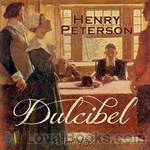 Dulcibel A Tale of Old Salem
Dulcibel A Tale of Old Salem
Dulcibel is a young, pretty and kind-hearted fictional character charged with Witchcraft during the infamous Salem Witch trials. During this time there is a group of "afflicted girls" who accuse Dulcibel and many others of Witchcraft, and during their trials show "undoubtable" proof that these people really are Witches. Will Master Raymond, Dulcibel's lover, be able to to secure Dulcibel's release from jail? Or will Dulcibel's fate be the gallows like so many other accused Witches of her time? | |
By: Owen Wister (1860-1938) | |
|---|---|
 Padre Ignacio, Or The Song Of Temptation
Padre Ignacio, Or The Song Of Temptation
Padre Ignacio has been the pastor of California mission Santa Ysabel del Mar for twenty years. In 1855 a stranger rides into the mission bringing news and a spiritual crisis. It's really more of a novella than a novel. | |
By: Maud Jean Franc | |
|---|---|
 Two Sides To Every Question: From A South Australian Standpoint
Two Sides To Every Question: From A South Australian Standpoint
'Two Sides to Every Question’: From a South Australian Standpoint is a meditation on poverty, wealth, and social aspiration set in the free settlement of Adelaide in pre-Federation Australia. The novel follows the lives of a cast of characters from different social classes as they negotiate the twists and turns in their respective fortunes. The newly-bereaved Alton family—an invalid widow and her two grown children, Tom and Nettie—sell their rural property and move to the slovenly back streets of the inner-city; they are determined to hold onto their dignity and values as they turn to earning a living for the first time... | |
By: Anthony Pelcher (1897-1981) | |
|---|---|
 Astounding Stories 04, April 1930
Astounding Stories 04, April 1930
The fourth issue of Astounding Stories continues Ray Cummings serial "Brigands of the Moon", along with pulp sci-fi stories by Capt. S. P. Meek, Anthony Pelcher and other authors. | |
By: William John Locke (1863-1930) | |
|---|---|
 The Fortunate Youth
The Fortunate Youth
Paul is a poor boy who grew up in London, in the household of his mother and stepfather. His journey to greatness is the subject of our story. But his desired success comes at a very high price. | |
By: Harl Vincent (1893-1968) | |
|---|---|
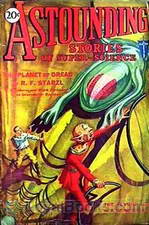 Astounding Stories 08, August 1930
Astounding Stories 08, August 1930
Issue eight of this seminal science-fiction magazine CONTENTS Murder Madness by Murray Leinster - the conclusion of this novel Earth the Maurader by Arthur J. Burks - Part 2 of a 3 Part novel as well as short Stories The Planet of Dread by R.F. Starxl, The Lord of Space by Victor Rousseau, The Second Satellite by Edmund Hamilton, Silver Dome by Harl Vincent and The Flying City by H. Thompson Rich | |
By: William Wordsworth (1770-1850) | |
|---|---|
 The River Duddon: A Series of Sonnets
The River Duddon: A Series of Sonnets
Located in a part of Cumbria that was once part of Lancashire, the River Duddon rises in the high fells of the Lake District and flows for 25 miles through varied scenery before disappearing into the sands between Millom and Barrow-in-Furness. Wordsworth’s series of sonnets, inspired by his walks along the river, were written over a period of years, but are arranged so as to follow its downward course from the fells to the sea. Part One of this reading consists of the 33 sonnets and postscript that were first published as a series in 1820... | |
By: Murray Leinster (1896-1975) | |
|---|---|
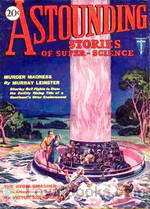 Murder Madness
Murder Madness
Murder Madness! Seven Secret Service men had completely disappeared. Another had been found a screaming, homicidal maniac, whose fingers writhed like snakes. So Bell, of the secret "Trade," plunges into South America after The Master--the mighty, unknown octopus of power whose diabolical poison threatens a continent! | |
By: Captain S. P. Meek (1894-1972) | |
|---|---|
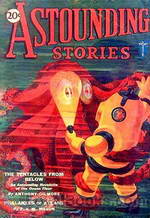 Astounding Stories 14, February 1931
Astounding Stories 14, February 1931
This issue includes "Werewolves of War" by D. W. Hall, "The Tentacles from Below" by Anthony Gilmore, "The Black Lamp" by Captain S. P. Meek, "Phalanxes of Atlans" by F. V. W. Mason, and contues with "The Pirate Planet" by Charles W. Diffin, | |
By: Charles Major (1856-1913) | |
|---|---|
 When Knighthood Was in Flower
When Knighthood Was in Flower
Set during the Tudor period of English history, When Knighthood Was in Flower tells the tribulations of Mary Tudor, a younger sister of Henry VIII of England who has fallen in love with a commoner. However, for political reasons, King Henry has arranged for her to wed King Louis XII of France and demands his sister put the House of Tudor first, threatening, "You will marry France and I will give you a wedding present – Charles Brandon's head!" | |
By: Sewell Peaslee Wright (1897-1970) | |
|---|---|
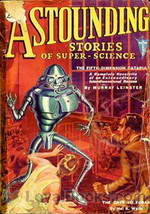 Astounding Stories 13, January 1931
Astounding Stories 13, January 1931
This issue contains "The Dark Side of Antri" by Sewell Peaslea Wright, "The Sunken Empire" by H. Thompson Rich, "The Gate to Xoran" by Hal K. Wells, "The Eye of Allah" by C. D. Willard, "The Fifth-Dimension Catapult" by Murray Leinster, and "The Pirate Planet[' by Charles W. Diffin. | |
 Astounding Stories 07, July 1930
Astounding Stories 07, July 1930
Issue seven of this seminal science-fiction magazine | |
By: Jack Williamson (1908-2006) | |
|---|---|
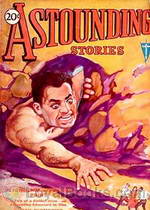 Astounding Stories 15, March 1931
Astounding Stories 15, March 1931
This issue includes "When the Mountain Came to Miramar" by Charles W. Diffin, "Beyond the Vanishing Point" by Ray Cummings, "Terrors Unseen" by Harl Vincent, the conclusion of "Phalanxes of Atlans" by F. V. W. Mason, and "The Meteor Girl" by Jack Williamson. | |
By: Charles Willard Diffin (1884-1966) | |
|---|---|
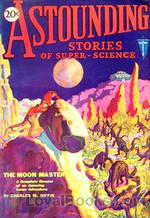 Moon Master
Moon Master
Through Infinite Deeps of Space Jerry Foster Hurtles to the Moon—Only to be Trapped by a Barbaric Race and Offered as a Living Sacrifice to Oong, their Loathsome, Hypnotic God. | |
By: Anonymous | |
|---|---|
 Mother Stories From the New Testament
Mother Stories From the New Testament
A book of the best stories from the New Testament that mothers can tell their children. | |
By: Harl Vincent (1893-1968) | |
|---|---|
 Astounding Stories 10, October 1930
Astounding Stories 10, October 1930
Issue no. 10 of the magazine brings you:- Stolen Brains by Captain S.P. MeekThe Invisible Death by Victor Rousseau Prisoners on the Electron by Robert H. Leitfred Part 2 of Jetta of the Lowlands by Ray Cummings An Extra Man by Jackson Gee along with the Readers' Corner and interesting scientific facts | |
By: Confucius 孔子 (551-479 BCE) | |
|---|---|
 Analects of Confucius
Analects of Confucius
The Analects, or Lunyu, also known as the Analects of Confucius, are considered a record of the words and acts of the central Chinese thinker and philosopher Confucius and his disciples, as well as the discussions they held. Written during the Spring and Autumn Period through the Warring States Period (ca. 475 BC - 221 BC), the Analects is the representative work of Confucianism and continues to have a substantial influence on Chinese and East Asian thought and values today. William Jennings was a rector of Grasmere, and late colonial chaplain. He served at St. John's Cathedral in Hong Kong. | |
By: Charles Blanden (1857-1933) | |
|---|---|
 Omar Resung
Omar Resung
Most of the translations of the Rubaiyat of Omar Khayyam have been in verse. However, there have been three notable exceptions to this convention; the French translation by J. B. Nicolas (1867), the English version by Justin Huntly McCarthy (1889) and another English version by Frederick Rolfe (better known as Baron Corvo, the author of Hadrian VII), published in 1903. Charles Blanden (1857 - 1933) belonged to the group known as the Chicago poets, the most famous of which was Carl Sandburg. Unlike his celebrated contemporary... | |
By: Tommaso Campanella (1568-1639) | |
|---|---|
 Sonnets of Michael Angelo Buonarroti and Tommaso Campanella
Sonnets of Michael Angelo Buonarroti and Tommaso Campanella
Michael Angelo and Campanella represent widely sundered, though almost contemporaneous, moments in the evolution of the Italian genius. Michael Angelo was essentially an artist, living in the prime of the Renaissance. Campanella was a philosopher, born when the Counter-Reformation was doing all it could to blight the free thought of the sixteenth century; and when the modern spirit of exact enquiry, in a few philosophical martyrs, was opening a new stage for European science. The one devoted all his mental energies to the realisation of beauty: the other strove to ascertain truth... | |
By: Unknown (1870-1916) | |
|---|---|
 Reginald in Russia and other sketches
Reginald in Russia and other sketches
Reginald in Russia is the title story in a collection of fifteen witty and satirical stories, sketches and one "playlet" by that master of the short story H. H. Munro, better Known as Saki. The stories are: Reginald in Russia -- The Reticence of Lady Anne -- The Lost Sanjak -- The Sex That Doesn't Shop -- The Blood-feud of Toad-Water -- A Young Turkish Catastrophe -- Judkin of the Parcels -- Gabriel-Ernest -- The Saint and the Goblin -- The Soul of Laploshka -- The Bag -- The Strategist -- Cross Currents -- The Baker's Dozen (A Playlet) -- The Mouse. | |
By: Saki (1870-1916) | |
|---|---|
 Unbearable Bassington
Unbearable Bassington
The Unbearable Bassington was the first novel written by Saki (H. H. Munro). It also contains much of the elegant wit found in his short stories. Comus (The Unbearable) Bassington, is a charming young man about town. His perversity however thwarts all his mother’s efforts to advance his prospects and lands him in hot water. Like many a “black sheep” he ends up being sent off to one of the colonies to fend for himself. This book showcases Saki’s wonderful writing and that ability to be so very funny and terribly sad at the same time. | |
By: Anonymous | |
|---|---|
 Saga of Gunnlaug the Worm-Tongue and Raven the Skald
Saga of Gunnlaug the Worm-Tongue and Raven the Skald
| |
By: William Shakespeare (1554-1616) | |
|---|---|
 Two Noble Kinsmen
Two Noble Kinsmen
The Two Noble Kinsmen is a Jacobean tragicomedy co-written by William Shakespeare and John Fletcher, first published in 1634. Set in ancient Greece during a war between Athens and Thebes, the narrative follows the title characters, Palamon and Arcite, noble youths whose friendship is destroyed by their mutual love for the beautiful Emilia. The subplot deals with the love and eventual madness of the Gaoler's Daughter, who falls hopelessly in love with Palamon. The play is based on "The Knight's Tale" by Chaucer, but also has echoes of Shakespeare's A Midsummer Night's Dream, as two of the major characters are Theseus and Hippolyta, who also appear in the earlier play. | |
By: Harl Vincent (1893-1968) | |
|---|---|
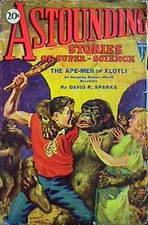 Astounding Stories 12, December 1930
Astounding Stories 12, December 1930
This issue includes "Slaves of the Dust" by Sophie Wenzel Ellis, Part B of "The Pirate Planet" by Charles W. Diffin, "The Sea Terror" by Captain S. P. Meek, "Gray Denim" by Harl Vincent, and "The Ape-Men of Xlotli" by David R. Sparks. | |
By: Anonymous | |
|---|---|
 Little Folded Hands
Little Folded Hands
Christian prayers for children to be said at mealtime, bedtime, special occasions and more. | |
By: Anthony Munday (1560? -1633) | |
|---|---|
 Sir Thomas More
Sir Thomas More
Sir Thomas More is a collaborative Elizabethan play by Anthony Munday and others depicting the life and death of Thomas More. It survives only in a single manuscript, now owned by the British Library. The manuscript is notable because three pages of it are considered to be in the hand of William Shakespeare and for the light it sheds on the collaborative nature of Elizabethan drama and the theatrical censorship of the era. The play dramatizes events in More's life, both real and legendary, in an episodic manner in 17 scenes, unified only by the rise and fall of More's fortunes. | |
By: William Shakespeare (1554-1616) | |
|---|---|
 Reign of King Edward the Third
Reign of King Edward the Third
| |
By: Olive Schreiner (1855-1920) | |
|---|---|
 Dreams
Dreams
Olive Schreiner was a South African writer and intellectual born in 1855 to missionary parents in the Eastern Cape. She was one of the earliest campaigners for women's rights. She was also very critical of British Imperialism in her homeland and particularly of their racist policies against the Boers, Jews, Indians and the Black races of South Africa. As a result of her public support for the Boers, all her manuscripts and her house were burned during the Anglo-Boer War and she was interned in a concentration camp for several years... | |
By: Mary Elizabeth Braddon (1835-1915) | |
|---|---|
 Asphodel
Asphodel
Like the Asphodel, a plant which grows far away from England, Daphne grows far away from home. In her first chance of freedom, at the age of almost 17, she finds an opportunity to forget for a while... Forget that her father, the renowned Sir Vernon Lawford, does not love her. To forget that, for some reason, nobody talks about her mother who traveled to the South of France and never returned. She can be a butcher's daughter from Oxford Street, she can control her friend's actions, she can fancy that she is in love with a man who does not even reveal his name... | |
By: James Buchanan (1791-1868) | |
|---|---|
 State of the Union Addresses by United States Presidents (1857 - 1860)
State of the Union Addresses by United States Presidents (1857 - 1860)
The State of the Union address is a speech presented by the President of the United States to a joint session of the United States Congress, typically delivered annually. The address not only reports on the condition of the nation but also allows the President to outline his legislative agenda and national priorities. This album contains recordings of addresses from James Buchanan. - Summary by Wikipedia and Linette Geisel | |
By: Horatio Alger, Jr. (1832-1899) | |
|---|---|
 Rough and Ready OR Life Among the New York Newsboys
Rough and Ready OR Life Among the New York Newsboys
Join Rough and Ready for his adventure on the streets of New York City. Working as a newsboy, Rough and Ready tries to support himself and his sister on his meager earnings. Unfortunately, their stepfather is seeking to kidnap little Rose, getting an education is hard work, swindlers are trying to trick him out of his money, and thieves are planning nefarious deeds. Luckily for Rough and Ready, he makes some good friends along the way. Summary by Tori Faulder | |
By: E. W. Hornung (1866-1921) | |
|---|---|
 Peccavi
Peccavi
How does a man who as committed a heavy sin — not a crime, but a sin with terrible consequences — atone for his behaviour? What if the man is a priest of the Church of England? That is the central question of E. W. Hornung’s Peccavi . The Rev. Robert Carlton, rector of the rural parish of Long Stow, now finds not only his parishioners turned against him, but also his patron Wilton Gleed, for under English ecclesiastical law’s allowance of advowson, a patron could in effect name a particular clergyman to a church living, or benefice, under his control... | |
By: Charles Dickens (1812-1870) | |
|---|---|
 Christmas Carol (Version 11)
Christmas Carol (Version 11)
The classic Christmas story of Ebenezer Scrooge, an elderly miser who is visited by the ghost of his former business partner Jacob Marley and the spirits of Christmas Past, Present and Yet to Come. The result of their visit shows that redemption is achievable for even the worst of us. - Summary by wikipedia and jvanstan | |
By: Godfrey Sweven (1845-1935) | |
|---|---|
 Riallaro: The Archipelago of Exiles
Riallaro: The Archipelago of Exiles
John Macmillan Brown was born in New Zealand and a University professor, wrote under the pseudonym Godfrey Sweven. An excerpt from the Introduction: "Absorbed in contemplation of its sublimity, I sat for a moment on a rock that rose out of the bush. I almost leapt from it, startled; a voice, unheralded, fell like a falling star through the soundless air. I had heard no footstep, no snap of trodden twig or rustle Of reluctant branch. My senses were so thrilled with the sound that its purport shot past them. There at the base of the rock stood the strangest figure that ever met my eyes." - Summary by Kirk202 | |
By: Various | |
|---|---|
 L'Art Pour l'Art
L'Art Pour l'Art
A disparate assemblage of lingual mastery spanning genres and prowess with an eye toward style in favor of capitulation. Tocsin was translated by W. H. Lowe Maldoror was translated by John Rodker Gridale was translated by F. S. Flint . | |
By: Kahlil Gibran (1883-1931) | |
|---|---|
 Prophet
Prophet
The prophet Al Mustafa, before leaving the city where he has been living twelve years, stops to address the people. They call out for his words of wisdom on many sides of the human condition, and he addresses them in terms of love and care. He has much to offer from his observations of the people, and he illustrates with images they can relate to. The author, Gibran, was influenced by the Maronites, the Sufis, and the Baha’i. His philosophy, though deist, is primarily aimed at the good within ourselves, and the common-sense ways in which we can unlock it... | |
By: Marie Corelli (1855-1924) | |
|---|---|
 Murder of Delicia
Murder of Delicia
The following slight and unelaborated sketch of a very commonplace and everyday tragedy will, I am aware, meet with the unqualified disapproval of the 'superior' sex. They will assert, with much indignant emphasis, that the character of 'Lord Carlyon' is an impossible one, and that such a 'cad' as he is shown to be never existed. Anticipating these remarks, I have to say in reply that the two chief personages in my story, namely, 'Lord Carlyon' and his wife, are drawn strictly from the life; and,... | |
By: Mary Elizabeth Braddon (1835-1915) | |
|---|---|
 Just As I Am
Just As I Am
The murder has finally been solved. After 20 years, Humphrey Vargas came with his dog, seemingly from no where, and informed the magistrate of the county that he murdered the popular Mr. Blake. He even told the magistrate the whole story. This book picks up where other books end and shows how this revelation brings about a chain of unexpected events. Knowing who murdered such a popular man does not make things any easier around the county, as memories finally surface, and relationships may change forever. - Summary by Stav Nisser. | |
By: Godfrey Sweven (1845-1935) | |
|---|---|
 Limanora, The Island Of Progress
Limanora, The Island Of Progress
Our ethereal man with wings, whom we met in Riallaro, continues his tale about Limanora which is a Utopian Island created as an experiment in Eugenics. Medical and technological advances have led to a central Power Source, computers, and weather control to name a few. - Summary by kirk202 | |
By: C. J. Dennis (1876-1938) | |
|---|---|
 Digger Smith
Digger Smith
“Digger Smith” is a series of narrative poems about an Australian soldier coming home in the closing months of the Great War minus a leg and with “ANZAC eyes” ... what a later war would call “The Thousand Yard Stare”. Despite his post-traumatic stress disorder, Digger Smith sets about ministering to everybody’s troubles but his own ... his internal conviction that his amputee status will make him seem “half a man” in the eyes of the lady love he left behind when he went off to the War. Oh Digger Smith, how little faith you have in woman... - Summary by Son of the Exiles | |
By: Eva March Tappan (1854-1930) | |
|---|---|
 World’s Story Volume VII: Germany, the Netherlands and Switzerland
World’s Story Volume VII: Germany, the Netherlands and Switzerland
This is the seventh volume of the 15-volume series of The World’s Story: a history of the World in story, song and art, edited by Eva March Tappan. Each book is a compilation of selections from prose literature, poetry and pictures and offers a comprehensive presentation of the world's history, art and culture, from the early times till the beginning of the 20th century. Topics in Part VII include the stories from the Nibelungen saga of the Germans, masterpieces of the Dutch Painters and the famous apple-shooting episode from Schiller's drama William Tell... | |
By: Ernest Hemingway (1899-1961) | |
|---|---|
 Three Stories & Ten Poems
Three Stories & Ten Poems
The author arranged for this collection of three short stories and ten poems to be printed in a small run of 300 copies in Dijon The book entered into the public domain in 2019. - Summary by KevinS | |
By: George Payne Rainsford James (1799-1860) | |
|---|---|
 Forgery
Forgery
Humphrey Scriven is a fine, genial, mercantile man, left widowed to raise three daughters and a son. Two of the daughters marry well although happiness is not enduring. The other defers her marriage, knowing her father disapproves of her choice. The son is a disappointment to his father -- his character is not as generous or kind. However, in time, this son inherits the business, with the exception of a portion left to a trusted clerk, Mr. Hayley. But there is a secret side to Mr. Hayley and maybe he is not quite the right man to guide the novice merchant. The two part ways acrimoniously and the clerk is driven to actions for which his son pays dearly. | |
By: Geraldine Hodgson (1865-1937) | |
|---|---|
 English Literature
English Literature
This book is not meant to be a History of English Literature, but an introduction for those who do not know much about it, or who may be thinking of it as a "dull, horrid thing" which they have to learn in school. I venture to hope that this book may become too dear to throw away when the study is done, and overall I have tried very hard not to write a "stuffy" book. Summary by Beth Thomas and the Introduction | |
By: Alexandre Dumas (1802-1870) | |
|---|---|
 Taking the Bastile
Taking the Bastile
Pitou lost his mother when he was small. He was raised by a stern aunt who did not really love him. He starts knowing the world by going to service. How can this man, Pitou the Peasant go on to influence the whole state? How can he go on and take a part in the French revolution? Can his motivation, coming from what he did not have, be enough? - Summary by Stav Nisser | |
By: Various | |
|---|---|
 Library of the World's Best Literature, Ancient and Modern, volume 10
Library of the World's Best Literature, Ancient and Modern, volume 10
The Library of the World's Best Literature, Ancient and Modern, is a work of enormous proportions. Setting out with the simple goal of offering "American households a mass of good reading", the editors drew from literature of all times and all kinds what they considered the best pieces of human writing, and compiled an ambitious collection of 45 volumes . Besides the selection and translation of a huge number of poems, letters, short stories and sections of books, the collection offers, before each chapter, a short essay about the author or subject in question... | |
By: Kenjiro Tokutomi (1868-1927) | |
|---|---|
 Nami-ko
Nami-ko
Nami-ko, a young woman of a noble Japanese family, has recently married the naval officer Takeo, the only heir of a friend of her father's. The couple is very happy together and Takeo is doing everything to create the perfect life for his wife, even more so when she contracts tuberculosis. Takeo's mother, however, sees Nami's illness as a threat to the survival of the family line. Egged on by Chijiwa, a spurned lover of Nami's and Takeo's cousin, she uses her son's absence to send Nami back to her family, thus effecting a divorce... | |
By: Alexandre Dumas (1802-1870) | |
|---|---|
 d'Artagnan Romances, Vol 3, Part 3: The Man in the Iron Mask (version 2)
d'Artagnan Romances, Vol 3, Part 3: The Man in the Iron Mask (version 2)
Volume 3 of The d'Artagnan Romances is divided into three parts. In this, the final part, d’Artagnan’s fortune is near its height; having become the illustrious Captain of the Musketeers, he is now the chief defender of King Louis XIV. Fortune has also smiled on his three companions: Aramis is a wealthy bishop and the powerful, secret Superior General of the Jesuit Order ; Athos is the premier nobleman of France; and Porthos becomes a Duke with the proud but garishly long-winded title of “du Vallon de Bracieux de Pierrefonds... | |
By: Edgar Rice Burroughs (1875-1950) | |
|---|---|
 Girl From Hollywood
Girl From Hollywood
The countryside outside of Los Angeles is a paradise on Earth: nature gives bounty on the land, the animals are majestic, the oaks breathe and the natural pools and ponds are all you would want on a summer's day. And if you are a Pennington or an Evans, life is simple and complete. However, every paradise has a serpent. For Rancho Ganado, that comes in the shape of Bootlegging, Drugs and Murder. All the vice of nearby Hollywood manifest themselves in the picturesque landscape, throwing the lives of these families into turmoil. - Summary by Joseph DeNoiaProof-listened by KevinS and linny | |
By: Soren Kierkegaard (1813-1855) | |
|---|---|
 In Vino Veritas, from Stages on Life’s Way
In Vino Veritas, from Stages on Life’s Way
In Vino Veritas is one section of Kierkegaard's Stages on Life's Way, originally published in 1845. In a conscious reference to Plato's Symposium, it is determined that each participant must give a speech, and that their topic shall be love. Lee M. Hollander said, "it excels Plato's work in subtlety, richness, and refined humor. To be sure, Kierkegaard has charged his creation with such romantic superabundance of delicate observations and rococo ornament that the whole comes dangerously near being improbable; whereas the older work stands solidly in reality... | |
By: Jules Verne (1828-1905) | |
|---|---|
 Captain Antifer
Captain Antifer
“No good deed goes Unpunished”, as the saying goes. A wealthy Egyptian leaves millions of buried treasure on an island and sends the location to the Captain that saved him while fleeing certain death from Napoleon Bonaparte. However the Egyptian does not leave the entire location: only the Latitude. The Longitude will be made known to him in time. Decades pass before a shifty notary from Alexandria arrives with the necessary Longitude, and now the lust for greed has passed from Captain to Son... | |
By: John Gray (1866-1934) | |
|---|---|
 Dial: The First Number of the Series
Dial: The First Number of the Series
The Dial was an art magazine, which ran to five issues between 1889 and 1897. It was edited and published by Charles Ricketts and Charles Shannon from The Vale, their shared home in Chelsea, London. Contributors to this first number include the editors, R. Savage, and the poet John Gray . - Summary by Rob Marland | |
By: Maxwell Bodenheim (1892-1954) | |
|---|---|
 Introducing Irony (Version 2)
Introducing Irony (Version 2)
Maxwell Bodenheim was once known as the King of Greenwich Village Bohemians after moving to New York after being one of the founders of the The Chicago Literary Times. But his life took a downward spiral and he became a panhandler and led a desultory life, finally ending in his murder along with his third wife in a Bronx apartment. The title of this book characterizes the tone of these 22 poems and 10 small stories, full of dark cynicism and twisted irony, with titles such as “Seaweed From Mars” and “ Insanity.” - Summary by Larry Wilson | |
By: The New York Times | |
|---|---|
 Mark Twain in the New York Times, Part One (1867-1879)
Mark Twain in the New York Times, Part One (1867-1879)
This collection of articles by and about Mark Twain and his family was compiled by Barbara Schmidt, publisher of twainquotes.com. Included in the chronological listing are some of Twain’s short stories, speeches and letters, as they appeared in the New York Times from the first up through 1924 . "Part One" of the collection includes articles that appeared from 1867 through 1879. The original microfiche articles are available at the New York Times "Time Machine" website: https://timesmachine.nytimes.com/browser/ - Summary by John Greenman and Barbara Schmidt | |
By: Grazia Deledda (1871-1936) | |
|---|---|
 After the Divorce
After the Divorce
Giovanna and Costantino Ledda are a happily married couple living with their young child in a Sardinian country village close to their extended family. Costantino is wrongly convicted of murdering his wicked uncle and with no way of supporting herself, Giovanna reluctantly divorces him and is driven to marry Brontu Dejas, a wealthy but brutish drunkard who has always lusted after her. As well as enduring a marriage amounting to slavery, Giovanna is derided by villagers for having two husbands... | |
By: The New York Times | |
|---|---|
 Mark Twain in the New York Times, Part Two (1880-1889)
Mark Twain in the New York Times, Part Two (1880-1889)
This collection of articles by and about Mark Twain and his family was compiled by Barbara Schmidt, publisher of twainquotes.com. Included in Part Two of this chronological listing are some of Twain’s short stories, speeches and letters, as they appeared in the New York Times in that decade. The original microfiche articles are available at the New York Times “Time Machine” website: https://timesmachine.nytimes.com/browser/ and here. - Summary by John Greenman and Barbara Schmidt | |
By: Frances Hodgson Burnett (1849-1924) | |
|---|---|
 Miss Crespigny
Miss Crespigny
This is a less known, but not less beautiful, novel by the author of The Secret Garden, A Little Princess, The Lost Prince, Little Lord Fauntleroy, The Shuttle, and many more. There is something different about miss Lysbeth Crespigny. Raised by three maiden aunts and sheltered from the world, she leaves them for the first time in order to explore the world. Yet she is often misunderstood. The world she discovers is more complicated and confusing then she anticipates. She is only 18 when the book starts. However the choices she has to make have consequences which she learns to navigate and become the strong woman she can be. - Summary by Stav Nisser. | |
By: Herman Melville (1819-1891) | |
|---|---|
 Billy Budd
Billy Budd
Young naive sailor Billy Budd is impressed into military service with the British navy in the 1790s, framed for conspiracy to mutiny, summarily convicted in a drum-head court martial, and hanged. Billy Budd is the final published work by Herman Melville, discovered in his personal papers three decades after his death. | |
By: The New York Times | |
|---|---|
 Mark Twain in the New York Times, Part Three (1890-1899)
Mark Twain in the New York Times, Part Three (1890-1899)
This collection of articles by and about Mark Twain and his family was compiled by Barbara Schmidt, publisher of twainquotes.com. Included in Part Three of this chronological listing are some of Twain’s short stories, speeches and letters, as they appeared in the New York Times in that decade. The original microfiche articles are available at the New York Times “Times Machine” website: https://timesmachine.nytimes.com/browser/. - Summary by John Greenman and Barbara Schmidt | |
By: Lord Dunsany (1878-1957) | |
|---|---|
 King of Elfland's Daughter
King of Elfland's Daughter
This is a 1924 fantasy novel by Anglo-Irish writer Lord Dunsany, which became public domain in January 2020. It is widely recognized as one of the most acclaimed works in all of fantasy literature. Highly influential upon the fantasy genre as a whole, the novel was particularly formative in the subgenres of "fairytale fantasy" and "high fantasy". And yet, it deals always with the truth: the power of love, the allure of nature, the yearning for contentment, the desire for fame, the quest for immortality, and the lure and the fear of magic... | |
By: Marcel Proust (1871-1922) | |
|---|---|
 Within a Budding Grove
Within a Budding Grove
"In the Shadow of Young Girls in Flower" is the second volume of Proust's heptalogy, "In Search of Lost Time" . Shadow insightfully deals with adolescent longing, and continues Proust's profound meditation on the nature of memory. The original French version was awarded the prestigious Prix Goncourt in 1919. NOTE: This book contains language that would have been considered appropriate at the time and which may not be appropriate today. | |
By: Alice Ilgenfritz Jones (1846-1906) | |
|---|---|
 Unveiling a Parallel
Unveiling a Parallel
In this work of utopian science fiction from the Victorian era written by Two Women of the West, a moniker for Alice Ilgenfritz Jones and Ella Marchant. A man travels to Mars to discover an Utopian world which is parallel to the Earth in some ways, but strikingly different in some. The freedom of women is not of this world. It is especially intriguing coming from the imagination of these two American women in the 19th Century. Summary by A. Gramour | |
By: Ernest Hemingway (1899-1961) | |
|---|---|
 In Our Time
In Our Time
This is the first edition of Hemingway's in our time, published in a very small run in France in 1924. And American edition was released the following year. There are 18 brief short stories---one might say vignettes---that demonstrate the author's early interests and his increasingly iconic literary style. - Summary by KevinS | |
By: Benito Mussolini (1883-1945) | |
|---|---|
 Mussolini as Revealed in His Political Speeches (November 1914 - August 1923)
Mussolini as Revealed in His Political Speeches (November 1914 - August 1923)
Benito Mussolini was an Italian journalist and politician, the leader of the National Fascist Party. He grew up as a violent bully, and the characteristics developed in childhood aided his upward career and later rule in Italy. He was also an excellent orator, and this was one of the qualities that helped him rise to power.This project contains over 60 of his earlier speeches, covering the years 1914-1923: from soon after his expulsion from the Socialist Party for supporting WWI, to his becoming Prime Minister yet still submitting outwardly to democratic rule. - Summary by TriciaG | |
By: Isaac Goldberg (1887-1938) | |
|---|---|
 Little Blue Book 646: The Spirit of Brazilian Literature
Little Blue Book 646: The Spirit of Brazilian Literature
One of the many Little Blue Books published to make learning available to all. These were short, informative, and inexpensive books that discussed many topics, including biographies, literature, essays, and more. This volume discusses Brazilian literature in an historical context. - Summary by KevinS | |
By: The New York Times | |
|---|---|
 Mark Twain in the New York Times, Part Four (1900-1906)
Mark Twain in the New York Times, Part Four (1900-1906)
This collection of articles by and about Mark Twain and his family was compiled by Barbara Schmidt, publisher of twainquotes.com. Included in Part Four of this chronological listing are some of Twain’s short stories, speeches and letters, as they appeared in the New York Times in that decade. The original microfiche articles are available at the New York Times’ “Times Machine” website: https://timesmachine.nytimes.com/browser/. - Summary by John Greenman and Barbara Schmidt | |
By: Friedrich Nietzsche (1844-1900) | |
|---|---|
 Birth of Tragedy
Birth of Tragedy
In this famous early work of German philosopher Friedrich Nietzsche, he investigates the artistic characteristics of Apollonian and Dionysian characteristics in Greek art, specifically in Greek tragedy as it evolved. Then he applies his conclusions about Greek tragedy to the state of modern art, especially modern German art and specifically to the operas of Richard Wagner. | |
By: Various | |
|---|---|
 Anzac Book
Anzac Book
A collection of prose, poetry, jokes, special orders, et cetera written by the Australian and New Zealand Army Corps combatants of the Gallipoli Campaign . - Summary by KevinS | |
By: Ludovico Ariosto (1474-1533) | |
|---|---|
 Tales from Ariosto
Tales from Ariosto
The object of the present venture is to do something to revive the interest of the ordinary English reader in Ariosto. The present volume is intended to give some of the chief stories of the "Orlando Furioso" in such a way as to bring out also the main plot. The "Orlando Furioso" is a conglomeration of stories of all kinds, from the most delicate and ideal romance to the broadest humor. | |